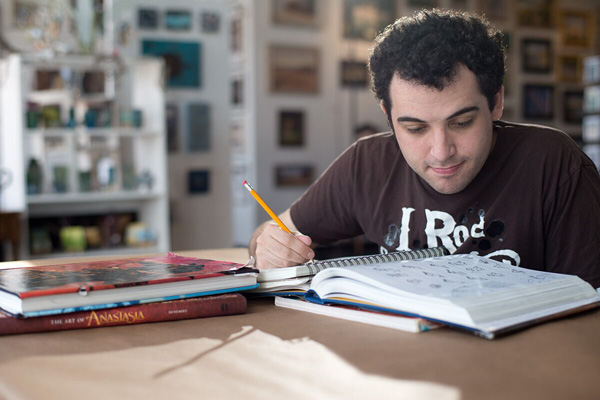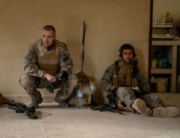In his graceful and disarming documentary, filmmaker Roger Ross Williams (of the excellent God Loves Uganda) gets inside the head of Owen Suskind, an autistic young man who learned how to communicate by taking his social and language cues from classic Disney cartoons. Not only did he learn how to make sense of the world through them, but their opening credit sequences even taught him how to read.
At age three, Owen’s motor and speech skills sharply decreased. The personality of the boy seen sword fighting with his dad, Ron, in a home video became withdrawn and uncommunicative; he was eventually diagnosed with regressive autism. However, while watching Disney films, he was calm and focused. A few years later, while the family was viewing The Little Mermaid, his parents deciphered what Owen was trying to tell them and realized that he was repeating the film’s dialogue. Ron repeated the snippet of banter back to his youngest son, and Owen looked into his dad’s eyes for the first time in a year. Taking advantage of this breakthrough, Ron used the hand puppet of Iago, from Aladdin, and, taking on the raspy voice of Gilbert Gottfried, engaged in the first conversation with his son since the diagnosis.
The film is also a portrait of a singular family that labored to understand and accommodate their son’s special needs; the goal, according to his father, was to pull Owen “out of prison.” The Suskinds live in Cape Cod, MA, and Ron is a Pulitzer Prize-winning reporter for the Wall Street Journal—the film is based on his book Life, Animated: A Story of Sidekicks, Heroes, and Autism. (He is also one of the movie’s executive producers.) Owen’s mother, Cornelia, homeschooled Owen for a year after he was dropped from a middle school, and his older and protective brother, who is named (coincidentally) Walt, drives up from Washington, DC, to spend time with him. The film refrains from painstakingly spelling out life lessons from this one family; if anything, the Suskinds teach by example.
Instead of becoming a poster child for a disability, Owen literally becomes the lead character in his own movie. In its own unassuming way, the film breaks barriers, without backpedaling on some of the challenges Owen faces as he, at age 23, leaves home and settles into his own apartment in an assisted-living complex and has his first relationship.
Through animation, Owen could easily read emotions through the heightened colors and exaggerated expressions. Presumably, he has memorized all of the Disney Studio’s films. From his parents’ home, he brings box loads of his movie collection—he may be the only millennial who prefers the VHS format—and rewatches them over again. (Not a purist, he also gravitates toward films by Pixar—Toy Story, Inside Out—as he revealed in a post-screening Q&A.) He also has no filter, lacks pretense, and lights up in front of the camera when talking about all things Disney. As one family member states, Owen tries “to fit the world into a Disney script.” His enthusiasm will convert those who have resisted the studio’s recent posse of princesses. Here, advocacy takes on the form of an amicable and affecting profile.
Additionally, through animation, Williams transforms Owen into a blue and green saturated version of his younger self in Owen’s autobiographical story, “The Land of the Lost.” It’s an easy guess which biography of his life Owen would prefer. With apologies to his father, Williams’s film likely trumps the book, thanks to creative touches like this one.
On one level, the film becomes a celebration of a film buff that would appeal to other cinephiles. The range of Disney clips covers a lot of ground, roughly 60 years of animation history with liberal appearances made by Pinocchio, Dumbo, Ariel, and company. It’s remarkable that as late as the 2000s, the studio still adhered to a hand-drawn aesthetic. After the recent spate of 3-D computer animated eye candy, the artistry of an entry like 1992’s Aladdin looks like (I can’t resist) a whole new world.

















Leave A Comment